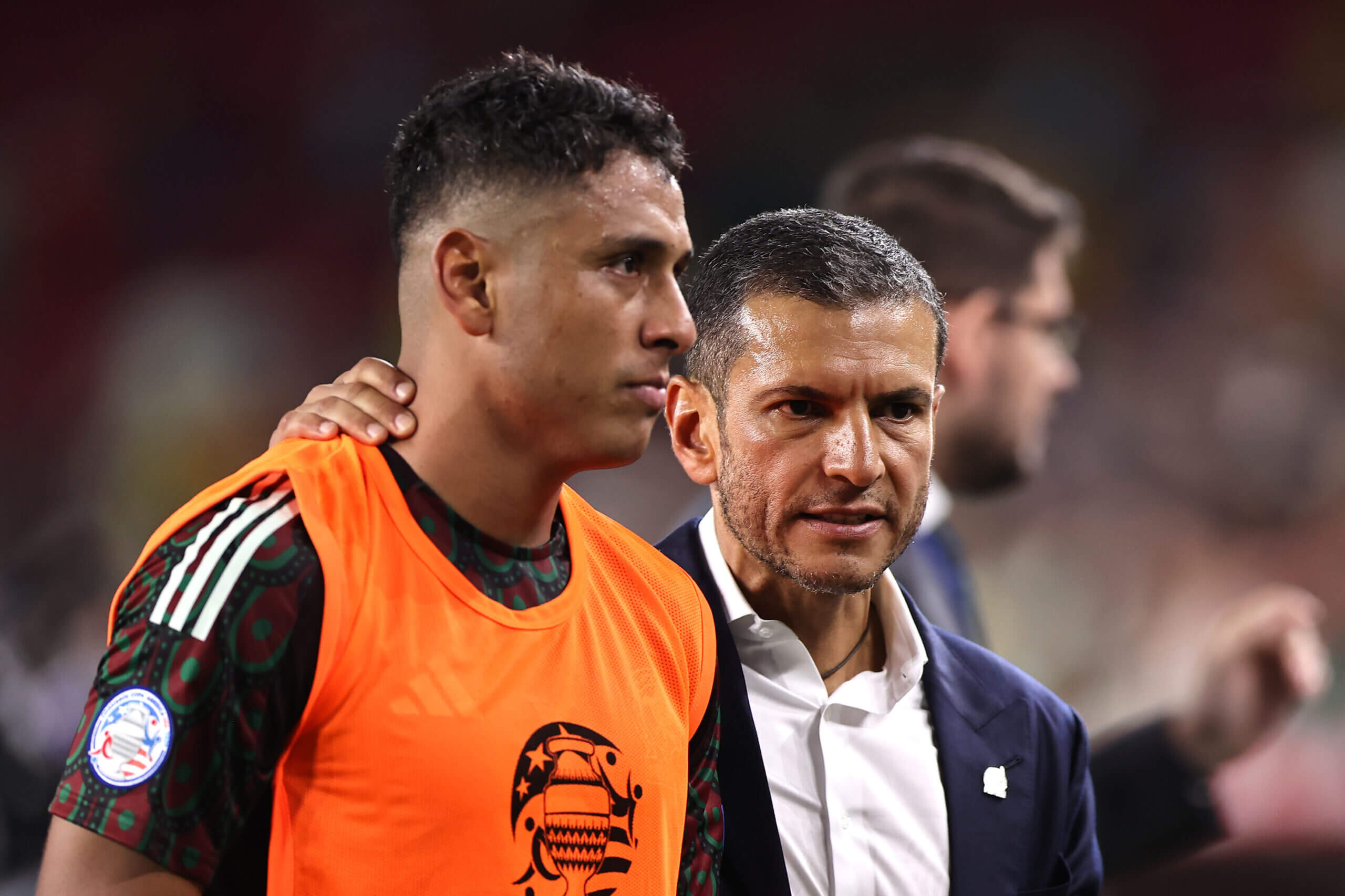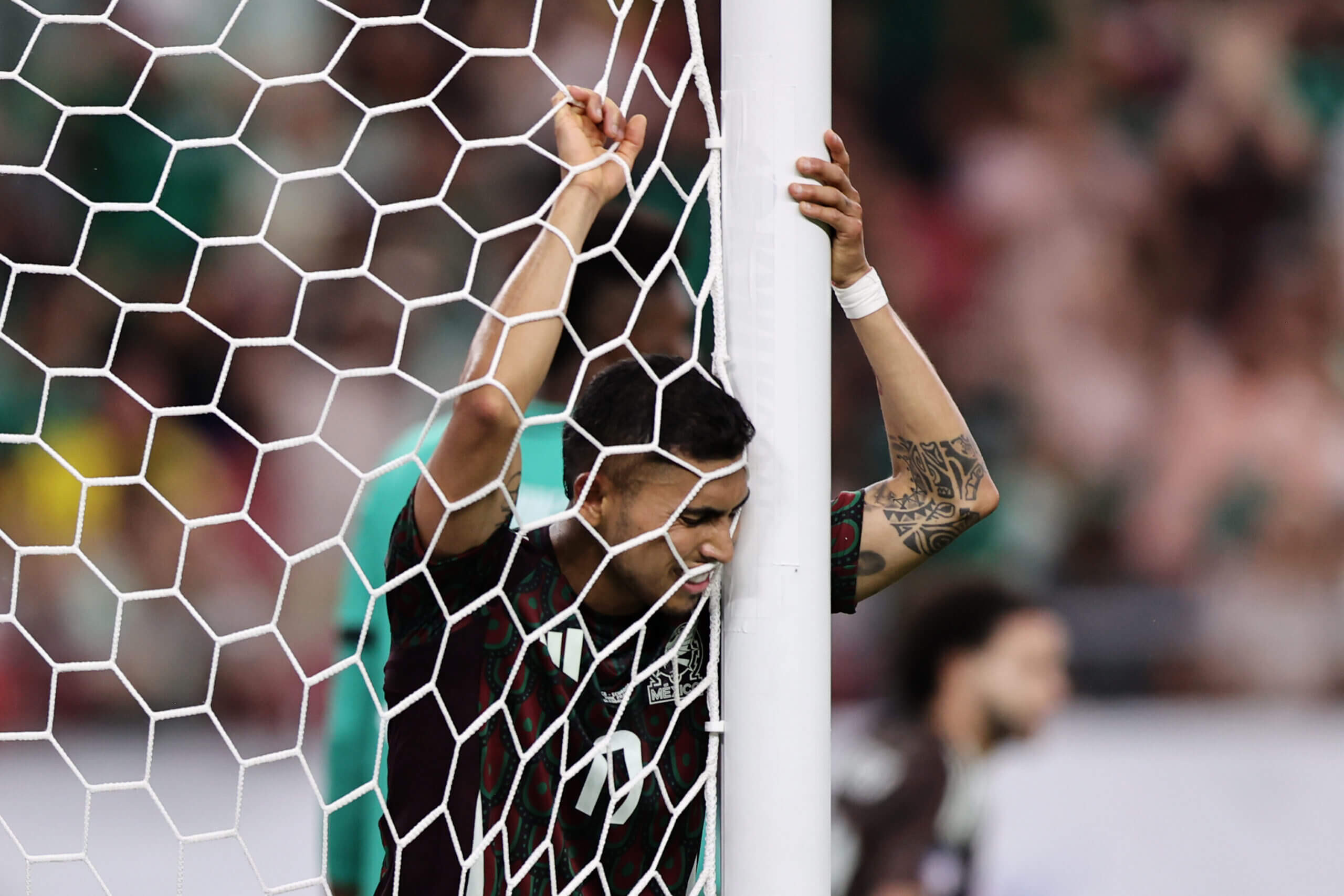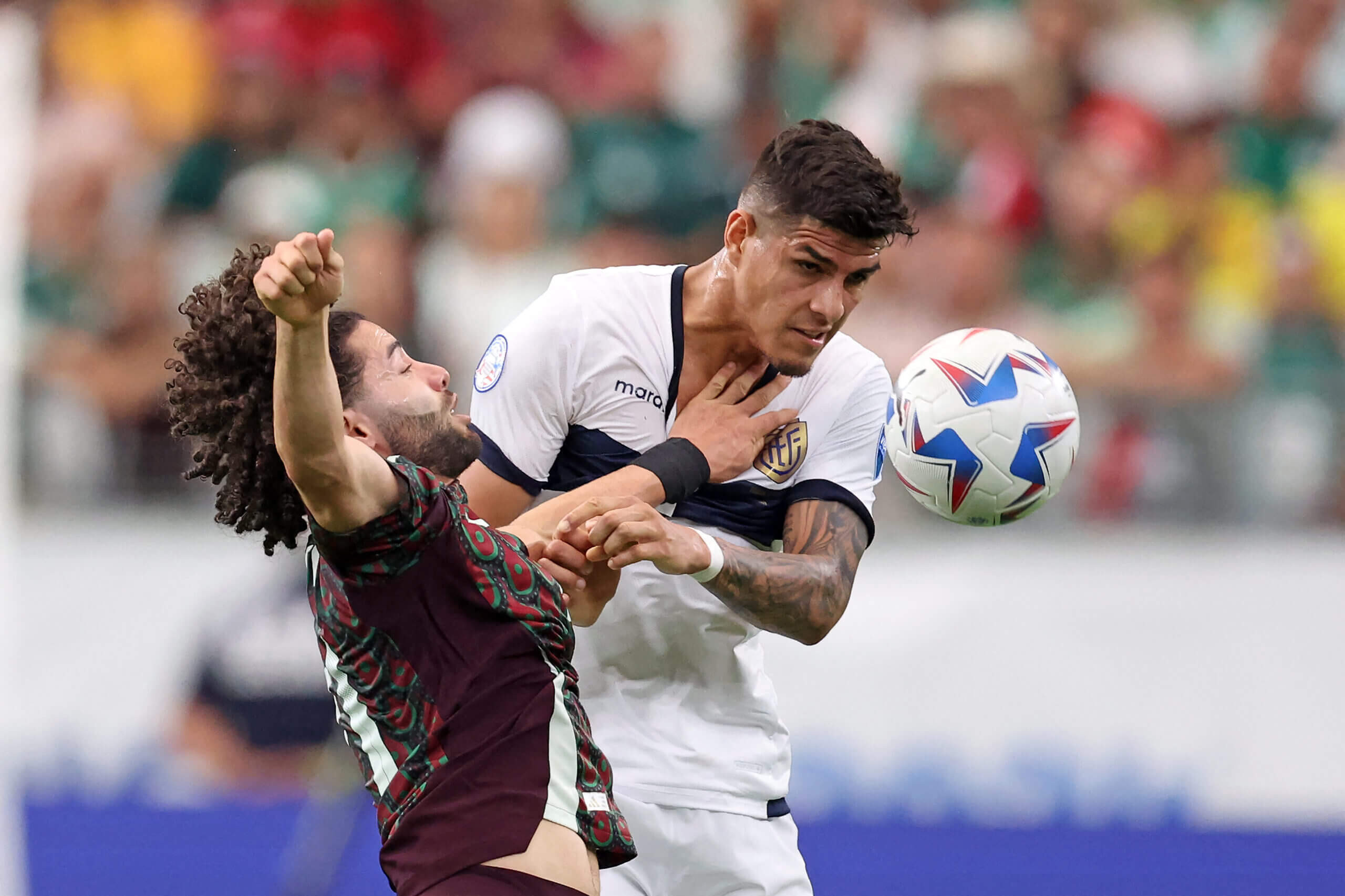Jaime Lozano arrived at NRG Stadium in Houston for a pre-match press conference ahead of Mexico’s Copa America 2024 opener. The very first question thrown at him foreshadowed the turbulent journey that lay ahead for El Tri over the next nine days.
“Jaime, after a year in charge, aren’t you weary of the constant questions about your position as national team coach?”
Lozano responded with a polite smile, navigating the query with practiced diplomacy, steering the conversation away from the elephant in the room. However, the underlying doubts regarding his future and the direction of Mexican football only intensified as their Copa America 2024 campaign unfolded, casting a shadow over their preparations for co-hosting the 2026 World Cup with the United States and Canada.
The Copa America 2024 draw initially seemed favorable for Lozano and his squad. Group B lacked any major footballing powerhouses, with no team ranked higher than 30th globally. Yet, Mexico faltered, failing to secure a top-two finish needed to advance to the quarter-finals.
While Lozano resisted labeling it as such, the Copa America 2024 outing was undeniably a failure. More than just a disappointing tournament exit, it served as a stark confirmation of Mexico’s current standing in international football in 2024.
 Jaime Lozano, Mexico
Jaime Lozano, Mexico
Mexico’s position in the global football hierarchy has undeniably declined. They are no longer the dominant force in the CONCACAF region, a reality underscored by their continued struggles against the USMNT over the past five years. The Copa America 2024 performances revealed a further worrying trend: Mexico now faces a significant challenge even against second-tier CONMEBOL nations.
A chastening 1-0 defeat to Venezuela in Los Angeles was followed by a goalless draw against Ecuador in Glendale, Arizona. Despite 98 minutes of play, Mexico couldn’t muster the single goal needed to progress in Copa America 2024. In truth, their struggles suggested the goal might have remained elusive even if the match had stretched on indefinitely.
Off-field issues further compounded the dismal Copa America 2024 experience. During the Ecuador match, repeated public address announcements warned fans to cease homophobic chants, threatening match suspension under FIFA’s anti-discrimination protocol.
The crucial question now is whether the Mexican Football Federation (FMF) will adhere to their pre-tournament declarations of long-term support for Lozano, focusing on building towards the future, or if the team’s lackluster Copa America 2024 exit – scoring just one goal in three games – coupled with mounting media and public criticism, will sway their decision.
“It’s challenging to build a project in the short, medium, and long term if every defeat triggers calls for a coaching change,” Duilio Davino, Mexico’s sporting director, stated earlier in June. “The project extends beyond the Copa America or next summer’s Gold Cup. We will conduct a thorough analysis at the end of the 2026 World Cup cycle.”
Regardless of the FMF’s decision regarding Lozano, Mexico’s footballing woes are deep-rooted and lack quick solutions.
A primary concern is the shrinking pool of top-tier talent. Only a mere seven members of Mexico’s Copa America 2024 squad play club football in Europe, with a paltry three in Europe’s elite “Big Five” leagues (England’s Premier League, Spain’s La Liga, Italy’s Serie A, Germany’s Bundesliga, and France’s Ligue 1). These numbers are unlikely to improve rapidly, despite Davino’s hopes that Copa America 2024 would serve as a platform for change.
 Orbelin Pineda, Mexico
Orbelin Pineda, Mexico
Davino had envisioned Copa America 2024 as a showcase for Mexico’s emerging talent, a “shop window” to attract European interest. However, the tournament performance effectively shuttered that window, displaying a sign reading: ‘Nothing to see here’.
Even Santiago Gimenez, despite his prolific goal-scoring record for Feyenoord in the Netherlands and attracting attention from major European clubs, struggled to replicate that form in a Mexico shirt during Copa America 2024.
GO DEEPER
The curious case of Santiago Gimenez: Wanted in Europe but struggling at Copa
The early loss of captain and midfield linchpin Edson Alvarez to a hamstring injury in their first Copa America 2024 match against Jamaica was a significant setback. Lozano could also ponder how the tournament might have unfolded had Orbelin Pineda converted his penalty against Venezuela. Yet, neither of these hypothetical scenarios alters the overarching narrative of Mexico’s underwhelming performances or the critical post-mortem examination back home following Copa America 2024.
One can only imagine the thoughts of the discarded veterans – Raul Jimenez, Hirving ‘Chucky’ Lozano, and Henry Martin – who were omitted as part of Lozano’s rebuilding process, described as ‘renovation’. This experienced trio, boasting 60 international goals and 217 caps collectively, were deemed surplus to requirements in “the process.”
Following the Ecuador stalemate, Lozano was questioned about the direction of this “process,” a valid inquiry given the circumstances of Mexico’s Copa America 2024 campaign.
“We’ve significantly improved defensively, but now we must find balance and refine our patience, that final touch in the attacking third,” he responded. “We’ve gained valuable insights from these players during this tournament, an experience that will serve us well.”
Few would argue against the need for a generational shift after the 2022 World Cup, where an aging Mexico squad suffered a group stage exit for the first time since 1978. However, the question remains: is Mexico truly undergoing “generational change,” or just rearranging deck chairs?
 Mexico vs Ecuador Copa America 2024
Mexico vs Ecuador Copa America 2024
The average age of Mexico’s Copa America 2024 squad was 25.7 years, a decrease from 28.5 years at the Qatar World Cup. While seemingly significant, the average age of the starting lineup against Jamaica was 27.2 years.
Only five players in Lozano’s Copa America 2024 squad were 23 or younger, and only two of those had significant playing time. The squad may be younger on paper, but the on-field team’s age profile hasn’t drastically changed. And crucially, the results from Copa America 2024 speak volumes about the current quality.
Last summer, the FMF outlined a series of initiatives aimed at long-term improvements: closer collaboration with Liga MX clubs, seeking guidance from experienced international football figures, scheduling more friendlies against higher-ranked opponents, and forging partnerships with European clubs to facilitate opportunities for young Mexican players abroad.
These are commendable long-term strategies. However, with a World Cup on home soil looming, the immediate concern is the present. Many in Mexico foresaw this predicament long before the first ball was kicked in Copa America 2024.
(Top photo: Mexico striker Santiago Gimenez; Alvaro Avila/Jam Media/Getty Images)